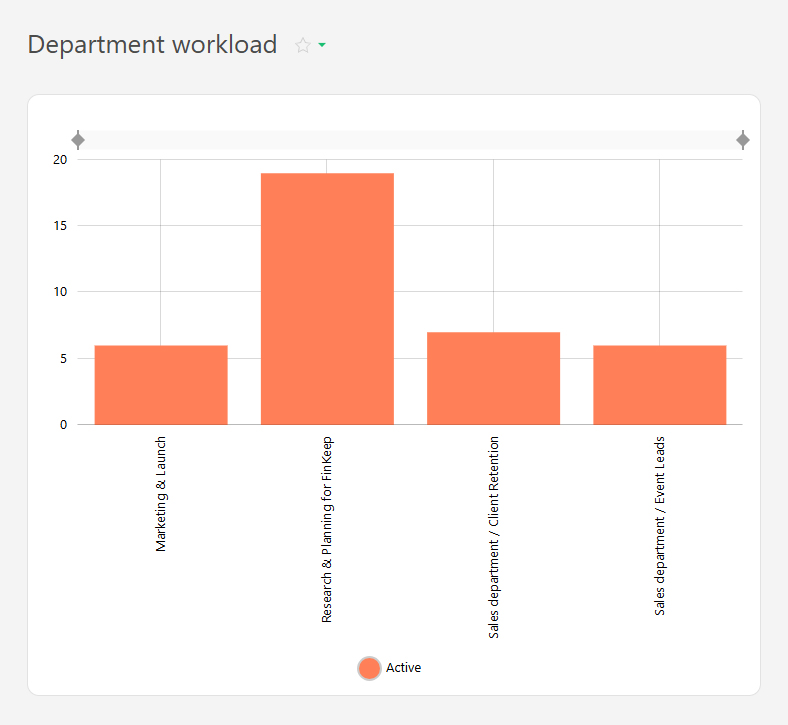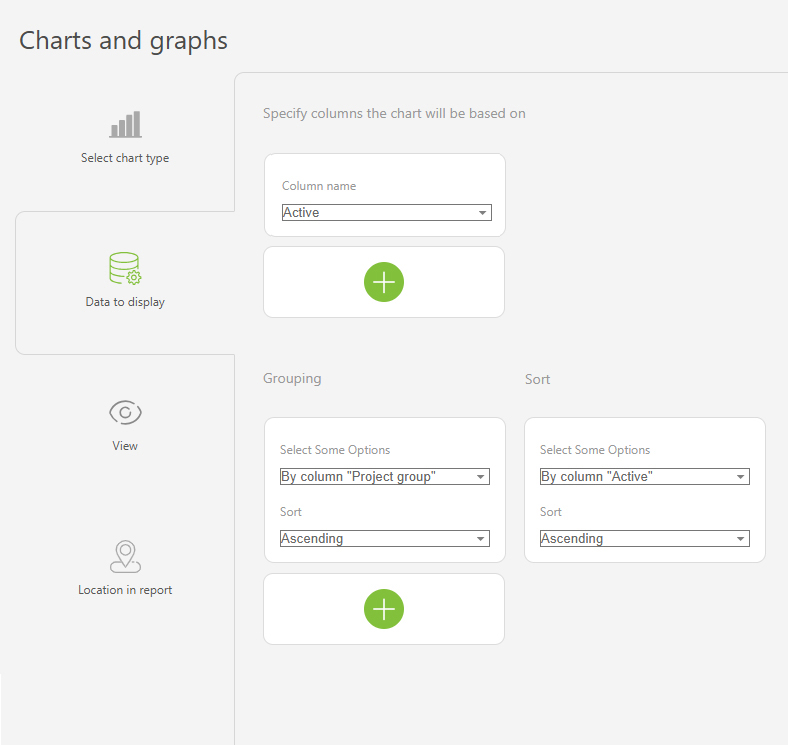Bar chart: Difference between revisions
From Planfix
No edit summary |
|||
| Line 48: | Line 48: | ||
https://s.pfx.so/pf/HA/r2DZMI.jpg | https://s.pfx.so/pf/HA/r2DZMI.jpg | ||
https://s.pfx.so/pf/ | https://s.pfx.so/pf/LJ/FECJuN.jpg | ||
== Go To == | == Go To == | ||
*[[Reports: Charts in reports|Charts in reports]] | *[[Reports: Charts in reports|Charts in reports]] | ||
*[[Reports]] | *[[Reports]] | ||
Latest revision as of 07:21, 15 July 2025
The Bar chart is a chart type available in reports. It displays data as vertical bars, with each bar representing a value or quantity that corresponds to a specific category. Bar charts are useful for comparing data.
For example, the active and completed tasks per employee for a month can be displayed:
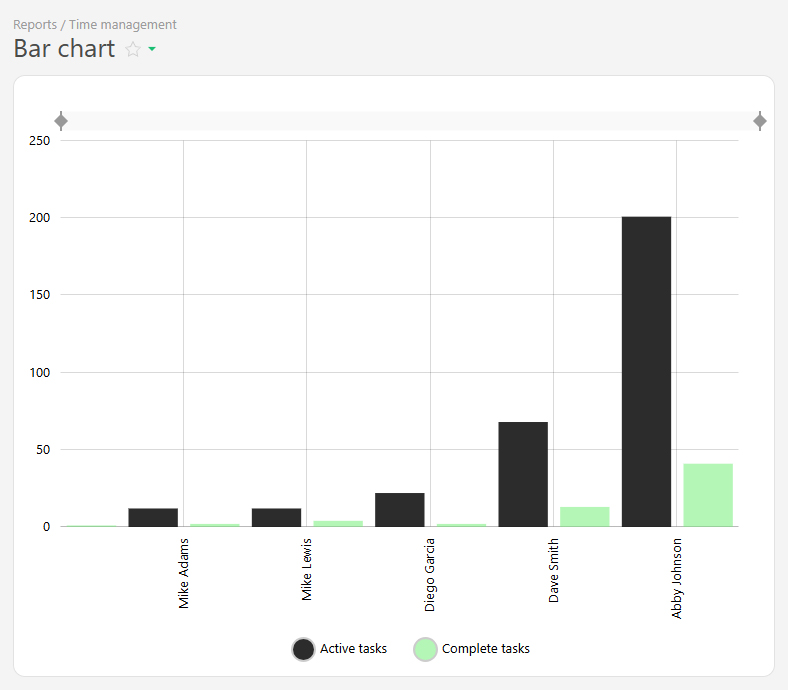 The bar chart is created from report data and consists of two axes:
The bar chart is created from report data and consists of two axes:
- Horizontal axis (X) — represents categories (e.g., days of the week, project names).
- Vertical axis (Y) — represents numerical values (e.g. number of tasks completed, hours worked, sales amounts).
To ensure that relevant data is displayed, use grouping and sorting.
Setup
- In the "Report view", add the columns that will form the bar chart.
- Go to the "Charts and graphs" section and add a new "Bar" type chart:

- In "Data to display", set the following:
- Columns on which the chart will be based: "Active tasks", "Completed tasks".
- Grouping: By the "Assignee" column.
- Sort: by the "Active tasks" column, ascending.
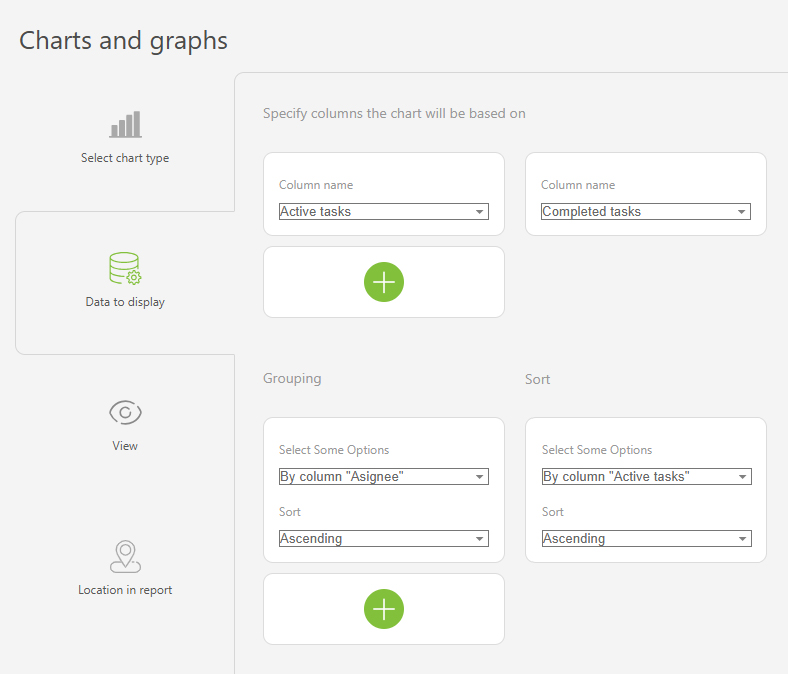
- In the "View" section, you configure how the chart is displayed:
- Chart height — defines the height of the chart in pixels.
- Legend location — controls how the axis labels are displayed. Tip: Use "Vertical" for longer labels to save space, "Horizontal" is best for shorter labels.
- Colors — helps to differentiate between data groups using different colors.
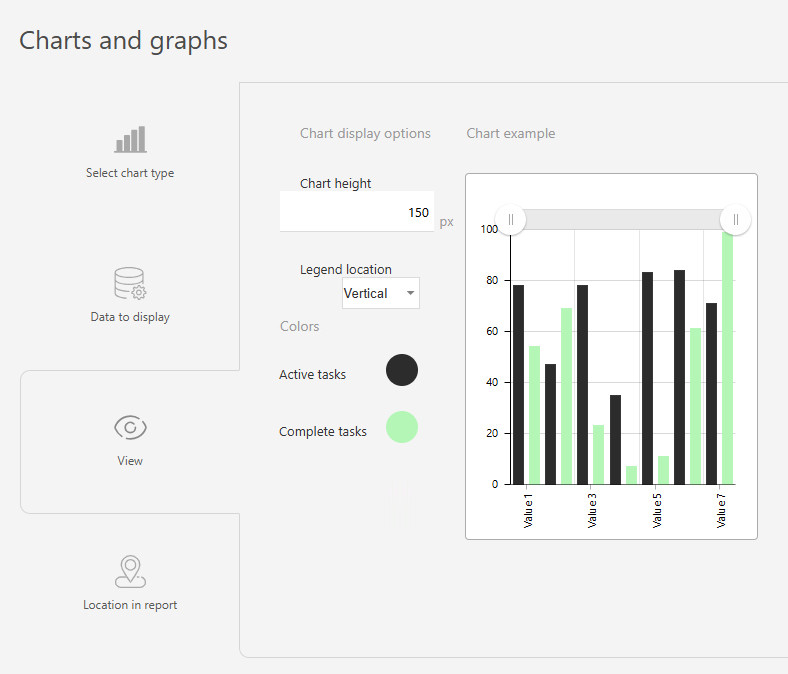
- Save the chart and run the report to view it.
Use case examples
- Project progress
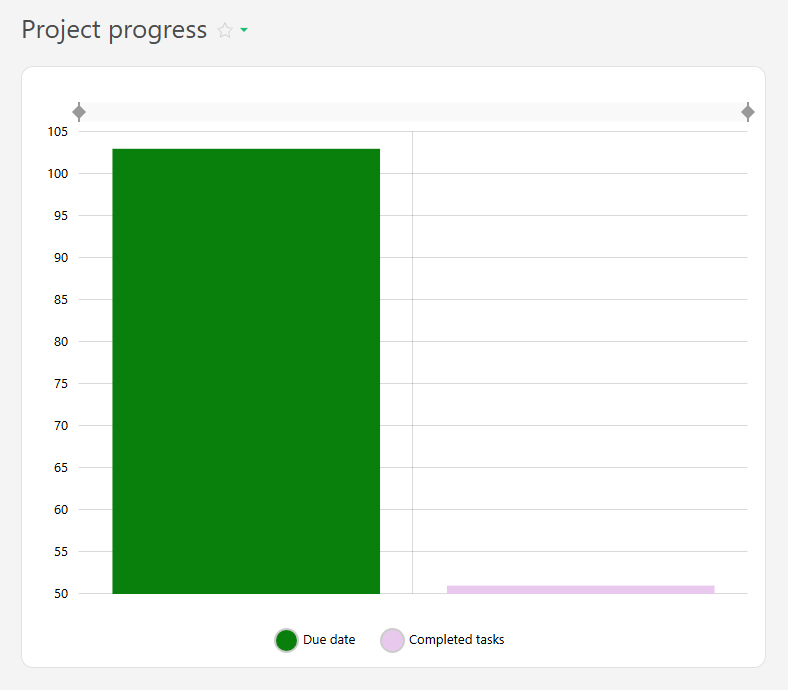
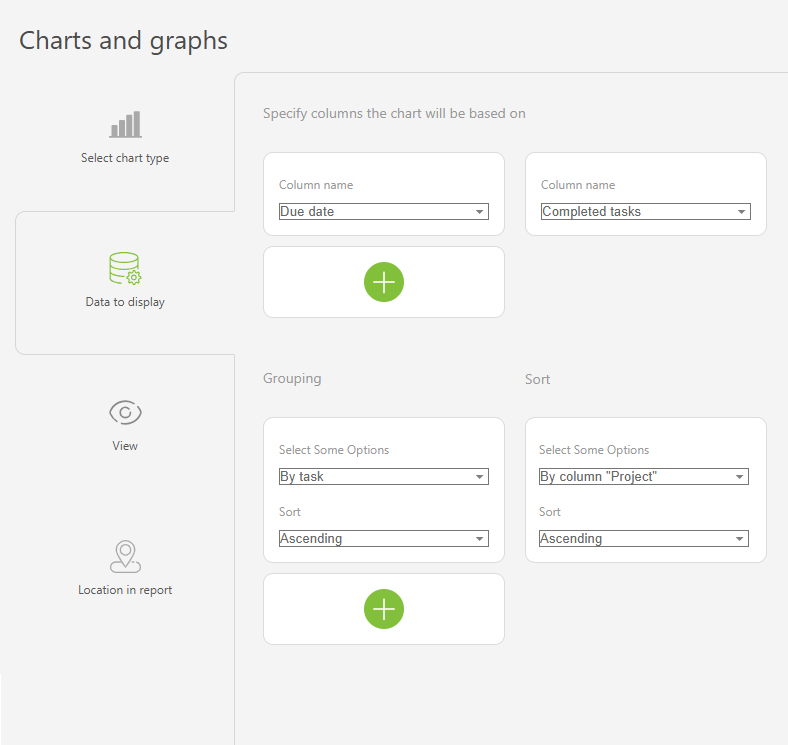
- Revenue by month
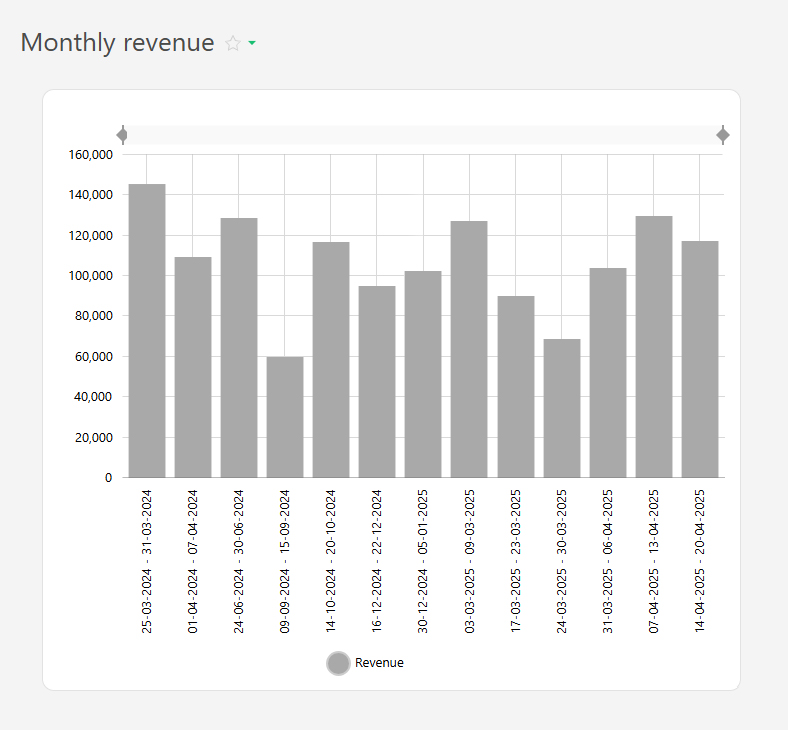
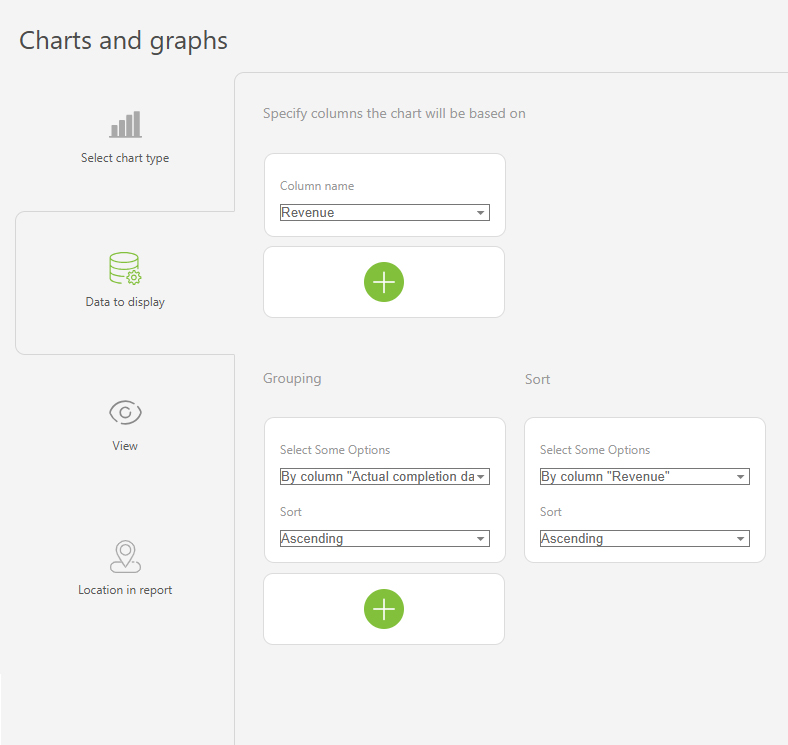
- Revenue by individual products
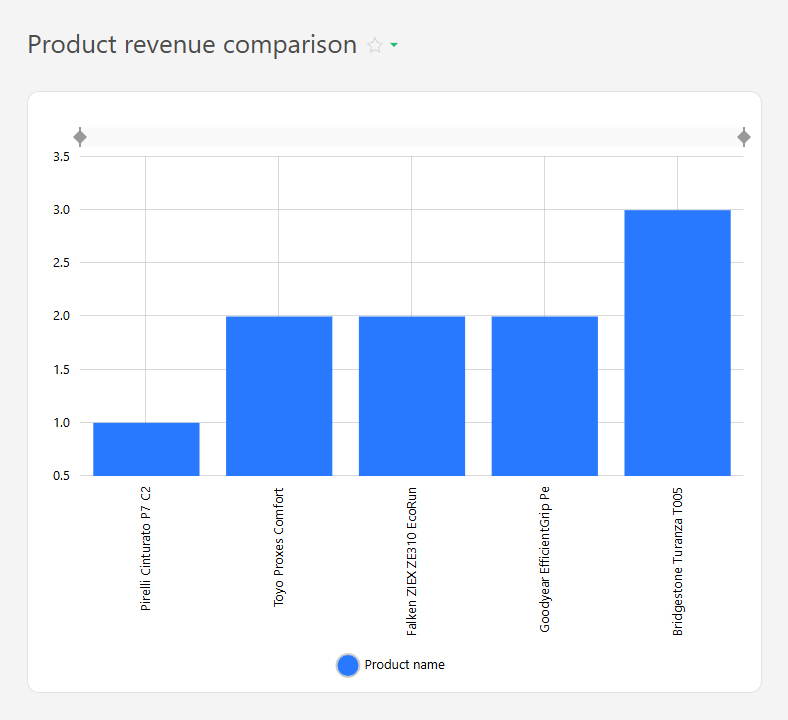
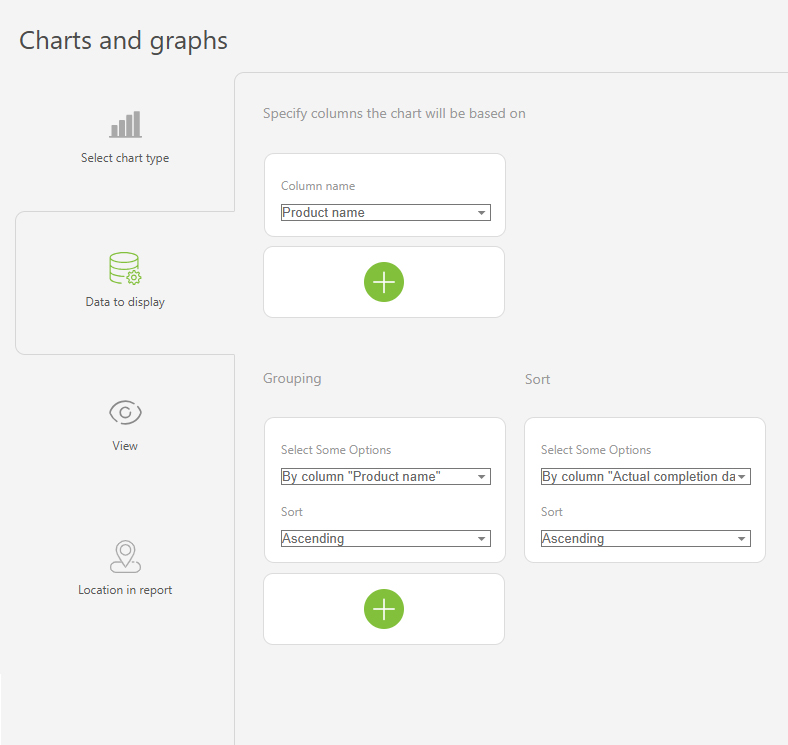
- Department workload level
